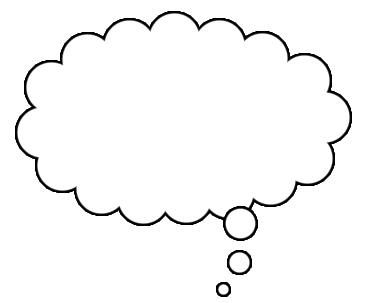
We’ve gone around the table introducing ourselves, and now comes the awkward moment when I sound a bit like a door-to-door salesman peddling an unfamiliar doohickey that costs too much and nobody really needs anyway.
“What is a personal essay?” I’ll begin. Students start shifting uneasily in their seats. It’s that word, essay. So scholarly, so stiff, so self-important. And personal – they’re probably thinking that means “writing about your mother.” I hurry through my notes.
“Let’s not talk about what a personal essay is,” I say. “Let’s talk about what it can do.” It opens a window into someone else’s life and sensibility, I’ll explain. Reveals something about the world that we didn’t know. Engages us with a distinctive voice. Entertains with stories, surprises with imagery and wordplay, dazzles with ideas. Conveys a deeper meaning.
Now I can almost see thought balloons forming over their heads. Meaning? How are they supposed to find meaning? They don’t even know what they’ll write about yet. I have no idea what they’ll write about. Now we’re all feeling slightly nervous about the whole enterprise.
“Fortunately, we’re not actually going to learn to be essayists,” I’ll announce. “We’re going to become tiny masters.”
That’s when we can relax and start writing. Because it turns out – and this is true 100 percent of the time – we’re all tiny masters of something.
The notion of tiny masters comes from author and New Yorker writer Susan Orlean, who once explained that she’s most interested in writing about people who are masters of their “tiny domains.” (She meant orchid thieves, 10-year-old boys, female bullfighters, Maui surfer girls, and The Shaggs, among others.) Adapting her approach to personal essays can help writers discover a rich subject near at hand – something they already know a lot about, something that interests them. It helps shift the focus from writing exclusively about the self to writing about knowledge, ideas and processes. As writers explore their mastery on the page, they instinctively begin playing with structure and making connections they never knew existed. Meaning begins emerging naturally from their drafts, pointing the way to future revisions.
This is how it works:
–Make a list of 10 things of which you’re a master. Include talents, skills, hobbies, qualities of character. I’ve created many lists over the years, and they surprise me every time: Making enchilada sauce. Building fires. Finding beach glass. Crossing rivers. Writing thank you notes. Collecting maps. Procrastinating. Teaching tricks to my dog.
–Choose a mastery that appeals and free-write about it. Describe how to do it, when you learned it, what you accomplish, where you do it – whatever comes to mind.
–Now write about a person connected with this mastery. Maybe it’s the person who taught you how to do it, someone you’ve done it for, or someone who discouraged you from doing it. Include details that capture the person’s personality or mannerisms.
–Next, write about a particular scene or event that involves your mastery and/or your person. Look for opportunities to add dialogue and setting.
By this point, writers usually have created a rough but promising first draft, even if it’s still in pieces. They’ve chosen something that’s important to them without worrying about whether it’s important enough. Stories, recollections, incidents and ideas start coalescing around their subject. Interrogating the draft reveals other connections and possibilities: Why this topic? What don’t I know? What information or background would enlarge the story? Why do I even like doing this? What is this about? What is this about really?
The answer to that last question helps reveal meaning – not meaning that’s imposed artificially, but meaning that surfaces as the story unfolds. Sarah realizes that she’s not really writing about making pies. She’s writing about breaking rules. Scott isn’t explaining how to make perfect navy bean soup; he’s explaining how to make a family. Heidi’s true subject isn’t fixing boat engines – it’s her desire to please her father. Kellen is not just describing his pleasure in playing the drums at high school; he’s reconciling himself to loving something he’ll never be great at doing.
Once I’ve tricked students into drafting a personal essay, we can focus on the finer points of tightening sentences, incorporating reflection, and crafting strong openings and closings. Does the structure they instinctively chose suit the subject? We’ll investigate alternatives. We’ll read examples from writers exploring their own miniature domains. We’ll figure out how to layer meaning by strengthening images and honing language.
By the time students are immersed in heavy revision, there will be no need to point out the obvious: They’re all becoming tiny masters of the personal essay.
Sherry Simpson’s newest collection of essays, The Accidental Explorer: Wayfinding in Alaska, was published in March 2008 by Sasquatch Books. She teaches creative nonfiction at the University of Alaska Anchorage and in the Rainier Writing Workshop in Tacoma, Washington
